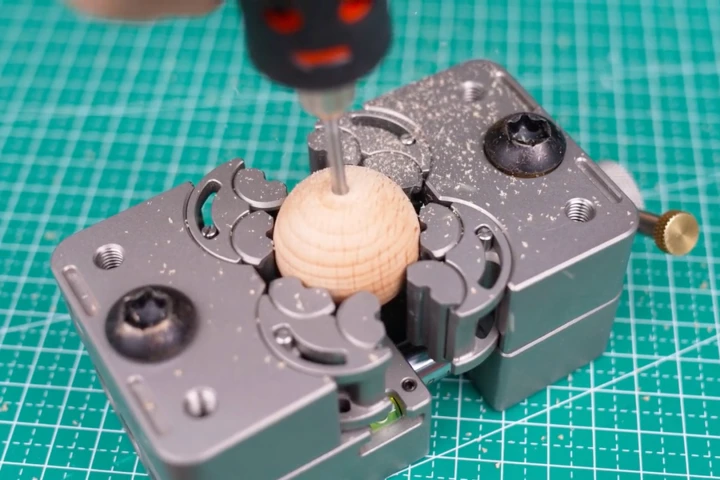Titanium
-
If there's one thing that we're already used to carrying around with us, it's the humble house key. The titanium-bodied KeyMaster 2.0 multitool was designed with that fact in mind, as it stuffs 18 functions into a familiar key-shaped form factor.
-
If you like portable yet capable camp stoves, then you'll probably like the FireNest. Sporting an all-titanium body, it folds flat when not in use, and can be quickly assembled to let you sear, grill, boil, or just plain ol' cook over an open flame.
-
In a perfect world, everything you try to clamp in a vise would have straight sides. The world isn't perfect, though, which is where the Tivise comes in. It's a fractal vise with jaws that adapt to the unique shape of whatever's placed inside it.
-
Boutique audio brand Astell&Kern is known for pushing the music hardware envelope in terms of tech and price, but its titanium-housed Luna earphones bump things up a notch with a price tag so high it will send your bank balance into orbit.
-
Let's be honest, some people just like things that look like guns. As a result, we've seen revolver-inspired bike lights, camera bags and smartphone lenses. Now it's time to meet the mean-looking Ti-Spin MultiKit screwdriver/utility knife multitool.
-
Knives and saws are plenty useful when camping, but they're still just two separate tools. Ti-Ally offers an alternative, in the form of a system wherein six different blades can be swapped in and out of a single multi-functional steel handle.
-
A miniature wrench can certainly be handy, but do you really want to carry it everywhere if it only serves one purpose? That's where the Titanium Mini Portable Wrench comes in, as it packs a total of eight functions.
-
Sometimes in life, you unexpectedly find yourself in situations where you just wanna say, "Screw it." That's where the FixBoy is designed to come in, as it's a compact titanium bit driver with magnetic storage slots for five bits.
-
Japanese hardware brand Titaner's new heavy duty EDC knife features what it's calling the world's first dual-lock system to reliably prevent the blade from accidentally opening – in an ergonomic, built-to-last titanium frame.
-
Gadget freaks don't just like multitools – they're also big on fancy pens. If you're one of those folks, you might want to check out the titanium-bodied Dragon Pearl. The refillable ballpoint pen is warrantied for 100 years and a million clicks.
-
Sometimes you wanna measure things, but other times you want to do a bit more. That's where the TiCal Pro comes in, as it's a three-way caliper measuring tool that also lets you do some wrenching, bottle-opening, nail-pulling, and more.
-
While it's great to have a multitool with a ton of features, those features aren't going to do you much good if the tool is too big to carry with you. The Wolf Fang 2.0 packs in a simple five functions, but it's nice and tiny.
Load More











